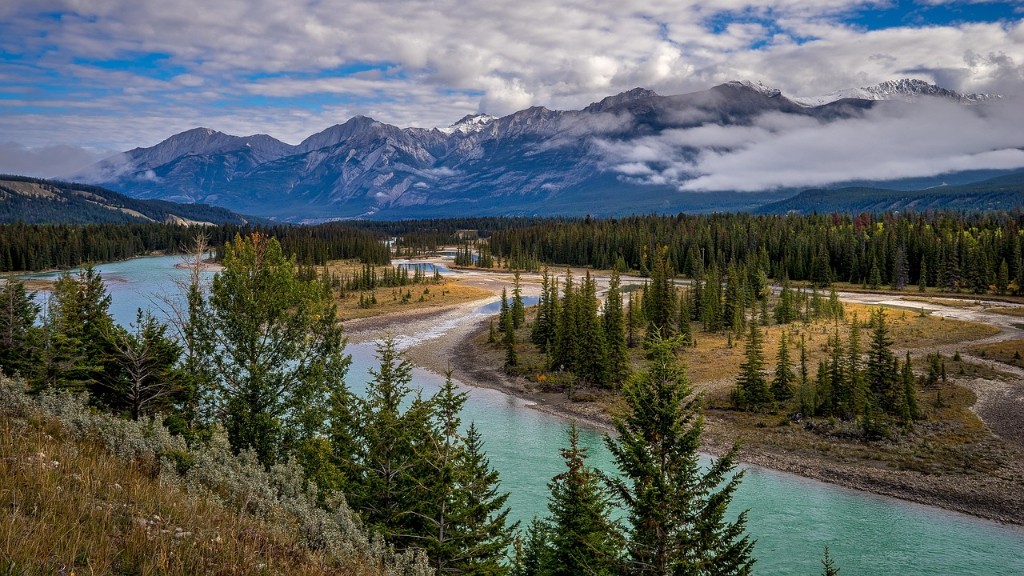What Have We Done to Protect the Mississippi River?
The Mississippi River is one of the most important waterways in the United States and a major economic asset to its namesake states. Without adequate protection, the river could become a hazard instead of an asset. Thanks to various efforts over the years, we have largely been successful in protecting the Mississippi River. Here we’ll look at some of the most impactful initiatives completed so far and what else can be done.
The first major effort to protect the Mississippi River began over a century ago, in the early 1900s. The chief goal of these efforts focused on managing high levels of soil erosion that caused flooding and related problems. At the time, one of the primary causes of erosion was poor agricultural practices. The US government started promoting soil conservation, and this was followed by massive public education and outreach campaigns.
Over the years, more initiatives were undertaken to protect the Mississippi River. In the 1960s, the US Army Corps of Engineers was authorized to create a comprehensive system of locks and dams on the Mississippi River. This infrastructure has served to greatly reduce flooding, making navigation easier and safer for barge operators and other river users. In addition, sediment control measures have been implemented to keep the river channels clear and free flowing.
In the decades since, various laws, regulations, and policies have been enacted to protect the Mississippi River’s natural habitat and its surrounding communities. In 1972, the Clean Water Act was passed, which helped reduce water pollution caused by agricultural wastewater and industrial discharges. This has been followed by additional provisions, such as the 1988 Water Quality Act, that strictly regulate hazardous substances and pollutants.
The most recent initiative has been to address the problem of nutrient pollution caused by intensive agriculture. In particular, the US Department of Agriculture has implemented various measures to reduce the amount of runoff from farms and to filter pollutants from runoff before it enters the river. These measures are proving to be quite effective in reducing the amount of nutrients entering the river and improving water quality.
Other efforts have targeted the river’s wildlife, habitat, and recreational opportunities. For example, the US Fish and Wildlife Service has designated several sections of the Mississippi River as Important Bird Areas, to protect the numerous waterfowl and bird populations that inhabit the area. Additionally, the National Park Service has designated several sections as National Heritage Areas, to preserve and promote the unique cultural and natural history of the region.
Various non-profit organizations have also joined in the effort to protect the Mississippi River in their own ways. For example, the Mississippi River Fund is a philanthropic organization dedicated to conserving the river’s aquatic and riparian ecosystems. The organization works with local stakeholders to identify and implement ecologically sound solutions to ensure a healthy river for years to come.
Sustainable Water Use
Sustainable water use is one of the most important things we can do to protect the Mississippi River. Water diversion from the river for irrigation and other human uses can have serious implications for the river ecosystem. To reduce water usage, states have implemented various initiatives such as metering and efficiency improvements that have been adopted by landowners and other local stakeholders.
In addition, there are a variety of methods that can be used to divert runoff or wastewater away from the river. These include wetland construction, stormwater harvesting, and buffer zone establishment. Such measures have been effective in limiting the amount of runoff entering the river and reducing pollutant load.
In recent years, advances in technology have enabled more efficient practices that reduce the amount of water needed by farmers. For example, precision agriculture is a new technique that uses sensors and unmanned aerial vehicles to precisely monitor soil conditions and determine watering needs. This can greatly reduce water usage and ensure that the river’s water resources are not over-utilized.
Heavy Metals
Another significant problem for the Mississippi River is heavy metal pollution. Heavy metals such as lead, mercury, and zinc can enter the river from industrial runoff or agricultural activities. These pollutants can cause serious health problems for humans and animals, and can also damage the river’s ecosystem.
To combat this issue, the EPA has implemented various regulations that require industry to limit their discharges into the river. This, combined with improved wastewater treatment technology and sediment control measures, has led to a marked decrease in heavy metal contamination of the Mississippi River in recent years.
In addition, states have enacted laws that require metal collectors and recyclers to properly dispose of heavy metals. This has dramatically reduced the amount of metals entering the Mississippi and its tributaries, leading to a healthier and safer environment.
Also, cleanup efforts have drastically reduced levels of heavy metals in the river. The EPA and other organizations have initiated cleanup projects in contaminated areas along the river, which has removed a significant amount of heavy metal from the Mississippi.
Controlling Invasive Species
Another significant threat to the Mississippi River is the presence of invasive species. Invasive species are non-native species that have the potential to cause significant harm to the environment by out-competing native species or introducing disease. Controlling these species is essential to protecting the Missouri River.
To combat invasive species, the US Fish and Wildlife Service has developed a number of initiatives. These include monitoring efforts to identify new invaders and control plans to target specific species in areas where they are most present. Additionally, regulations have been put in place to reduce the introduction of new invasive species and to protect native species.
In addition, the use of biological controls and mechanical methods has proven to be effective in controlling invasive species. These methods allow for the removal of specific species without impacting the environment and native species.
Finally, the implementation of public awareness campaigns has been key to stopping invasive species from entering the Mississippi in the first place. These campaigns have raised public awareness of the issue and encouraged people to take steps to protect the river from invasion.
Water Quality Improvement
Ensuring good water quality in the Mississippi River is paramount to protecting the environment and human health. To that end, the US Environmental Protection Agency (EPA) has a number of initiatives in place to improve water quality in the river. These include imposing regulations on the amount of pollutants that can be released into the river, promoting best management practices on farms and industries, and implementing proactive monitoring and surveillance efforts.
In addition, the EPA has utilized its total maximum daily load (TMDL) framework to set limits for specific pollutants in the river. This approach sets a maximum amount of pollutants that can be discharged by industries and municipalities, which reduces the overall amount of pollutants entering the river.
At the local level, states have enacted laws that are aimed at improving water quality. For example, some states have implemented conservation measures to reduce the amount of nutrients entering the Mississippi, such as limiting fertilizer use and banning certain pesticides.
In addition, some states have implemented wastewater reuse systems that allow wastewater to be used for irrigation purposes. This not only improves water quality by reducing the amount of wastewater entering the river, but also has the added benefit of reducing water use.
Restoration Projects
Restoration projects are another important effort to protect the Mississippi River. These projects involve restoring degraded areas along the river, such as wetlands, riparian buffers, and wildlife habitats. The goal of these projects is to improve the environmental health of the river system by restoring its natural features and functions.
In addition, restoration projects also have economic benefits. Wetlands provide natural flood protection, reducing the risk of damage due to flooding. They also provide habitat for fish and wildlife, helping to maintain healthy populations in the region.
The US Fish and Wildlife Service and the US Army Corps of Engineers have led several major restoration projects in the Mississippi watershed. These projects have included removing obstructions in the river, restoring habitat, and increasing water flow. Such projects have been successful in restoring the river’s natural features and improving its overall health.
Conclusion
The Mississippi River is an incredibly important waterway that not only serves an economic purpose, but also provides a home for a variety of species. Over the years, efforts have been made to protect this unique ecological system by reducing soil erosion, improving water quality, controlling invasive species, and restoring damaged areas. The importance of these efforts should not be underestimated, and there is still more work that can be done to ensure a healthy and sustainable river for generations to come.





